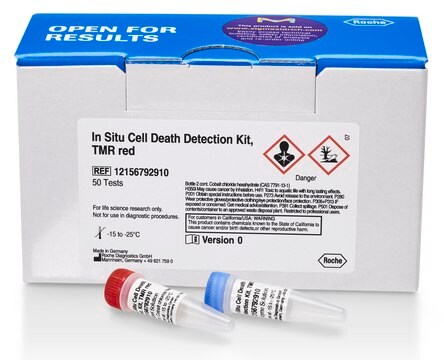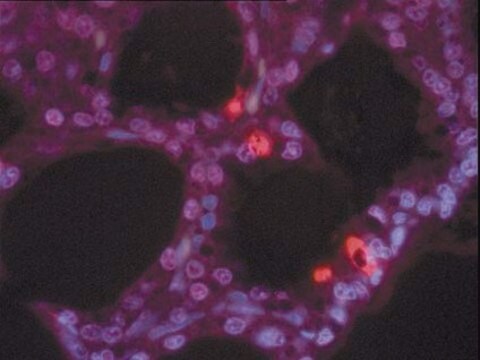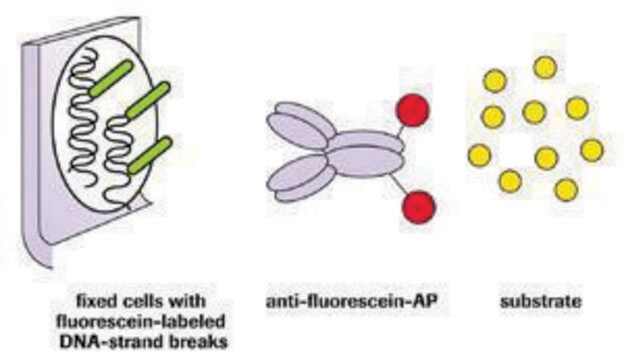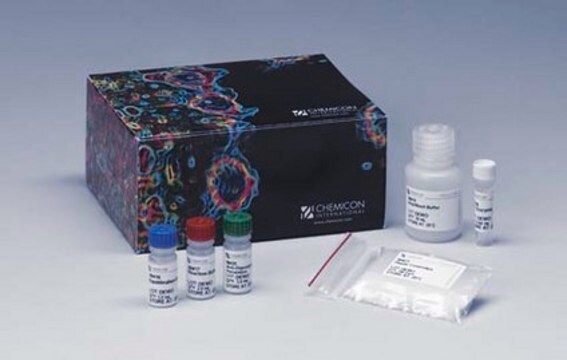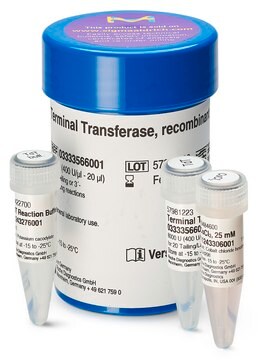Kluczowe dokumenty
11767291910
Roche
TUNEL Label Mix
sufficient for 30 tests, pkg of 3 × 550 μL
Synonim(y):
transferase dUTP nick end labeling, tunel
About This Item
Polecane produkty
Formularz
solution
Poziom jakości
zastosowanie
sufficient for 30 tests
opakowanie
pkg of 3 × 550 μL
producent / nazwa handlowa
Roche
kolor
colorless
rozpuszczalność
water: miscible
temp. przechowywania
−20°C
Opis ogólny
Zastosowanie
Uwaga dotycząca przygotowania
For one test: Mix 45 μl TUNEL Label with 5 μl TUNEL Enzyme prior to use. For negative control use 50 μl/test TUNEL Label only.
Storage conditions (working solution): Note: The TUNEL reaction mixture (45 μl TUNEL Label with 5 μl TUNEL Enzyme for 1 test) should be prepared just before use, and should not be stored. Keep the TUNEL reaction mixture on ice until use.
Inne uwagi
Hasło ostrzegawcze
Danger
Zwroty wskazujące rodzaj zagrożenia
Zwroty wskazujące środki ostrożności
Klasyfikacja zagrożeń
Aquatic Chronic 2 - Carc. 1B Inhalation
Kod klasy składowania
6.1D - Non-combustible acute toxic Cat.3 / toxic hazardous materials or hazardous materials causing chronic effects
Klasa zagrożenia wodnego (WGK)
WGK 3
Temperatura zapłonu (°F)
does not flash
Temperatura zapłonu (°C)
does not flash
Wybierz jedną z najnowszych wersji:
Certyfikaty analizy (CoA)
It looks like we've run into a problem, but you can still download Certificates of Analysis from our Dokumenty section.
Proszę o kontakt, jeśli potrzebna jest pomoc Obsługa Klienta
Masz już ten produkt?
Dokumenty związane z niedawno zakupionymi produktami zostały zamieszczone w Bibliotece dokumentów.
Klienci oglądali również te produkty
Nasz zespół naukowców ma doświadczenie we wszystkich obszarach badań, w tym w naukach przyrodniczych, materiałoznawstwie, syntezie chemicznej, chromatografii, analityce i wielu innych dziedzinach.
Skontaktuj się z zespołem ds. pomocy technicznej
